
The Sundowners – 1960
I was actually surprised by how much I enjoyed this movie. True, there were no big action sequences of any real significance, the music was strangely laughable, and the muddy Australian accents were often distracting, but the story was well structured and the character development was spot on.
The four leads each turned in some pretty competent performances. Robert Mitchum played Irish-born Australian sheep herder, Paddy Carmody. He has a wanderlust that that he cannot deny. His wife Ida, played by Deborah Kerr, agreed to live his nomadic lifestyle when she married him, but has since changed her mind. Their 14 year old son Sean, played by Michael Anderson Jr., wants nothing more than to put down roots and settle in a single place. Along the way, the meet a British jack-of-all-trades named Rupert, played by Peter Ustinov.
They each did a pretty good job, except with the foreign accents. They just weren’t very consistent. Sometimes they sounded perfectly natural, at other times they sounded forced, and still at other times they seemed to disappear completely. As much as I respect her work, Kerr was the worst offender. I loved her character, and she played it well, but the accent just wasn’t convincing. Mitchum did better, but still wasn’t perfect.
The story followed the Carmody family through their ups and downs, the main conflict being Paddy’s aversion to owning a home, and his wife and son’s desire to have one. The conflict was both believable and interesting because the characters were so well written. Each of them had their flaws and their own motivations, making them realistic. Rupert didn’t seem to have any part in their difficulties except that he, like Paddy, had no desire to settle in one place for too long.
At one point, Ida convinces her husband to take a job at a sheep shearing ranch, keeping them in place for several months. He reluctantly agrees to take the job, giving his wife and son a taste of settled life. They make friends and they make money. But when Paddy feels like he needs to leave the sedentary life, he breaks their hearts, saying that he would rather leave them behind than be tied down.
I have been trying to decide whether I disliked his character or not. If the only way he could be happy was by living out in the open country, and the only way his wife and child could be happy was in a home, then maybe he was making the right decision. On the other hand, he should have been sensitive enough to the needs of his family to give them what they needed. Surely a compromise could have been arranged, like buying a home to have, but allowing him to be a roaming sheep herder in a seasonal fashion.
Anyway, that was how the film ended. The family lost all their money, or rather I should say, Paddy lost all their money gambling, though he promised to earn it back to purchase a farm for them to settle on. So they ended up remaining on the road with the prospect of putting down roots in the future.
And finally, I’ll end this review by talking about something I really liked and something I didn’t. The thing I liked was the character of Mrs. Firth, wonderfully played by Glynis Johns. She was fantastic. She was the owner and bartender of the local pub near the sheep shearing ranch. She had a bright and bubbly personality that was easy lo like. When Rupert wooed her with his British charms, she happily took him into her heart and into her bed. But what was so great about her character was that when he inevitably left her to go back out on the road, her spirit wasn’t dampened in the least. She never lost that beautiful smile. Well played Glynis!
But the thing I really didn’t like was the film’s score. Sometimes, it seemed like it didn’t fit at all. It constantly maintained this happy-go-lucky feel, no matter what was happening. For example, when there is a brush fire that puts everyone’s lives in danger, the music continued to be perky, bordering on silly. It had a similar feel to those old Disney nature documentaries, and I kept expecting to hear a narrated voice-over saying, “Now what have those two bear cubs found to play with? They better be careful! That skunk doesn’t look like he wants to play!” The score should have made me feel like Paddy might get injured or even burned to death, but the tension inherent in the scene was completely lost.
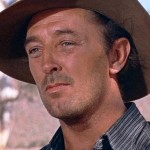
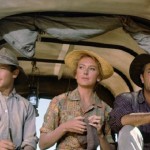
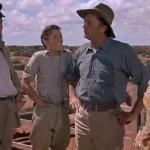
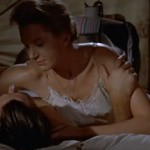
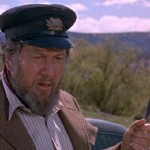
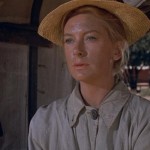
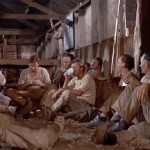
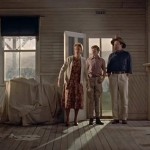
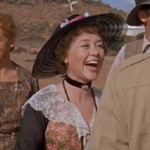
the horse drawn cart used in this film is owned by myself and is on display at the mt laura homestead museum Whyalla an item of interest as the shearing was filmed at Iron knob and carriwerloo a good family film The actors flew into Whyalla and were cheerfully greeted by the locals